Britannia
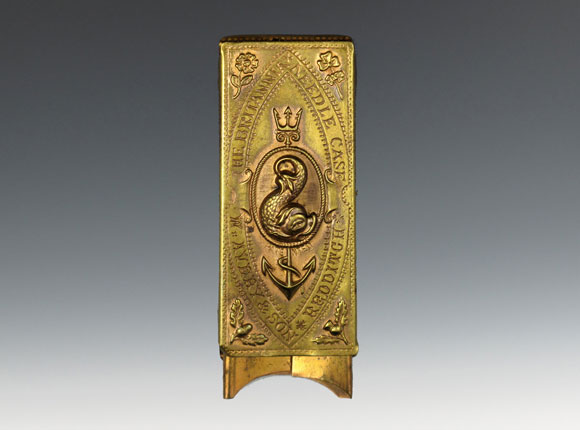
Needle Case
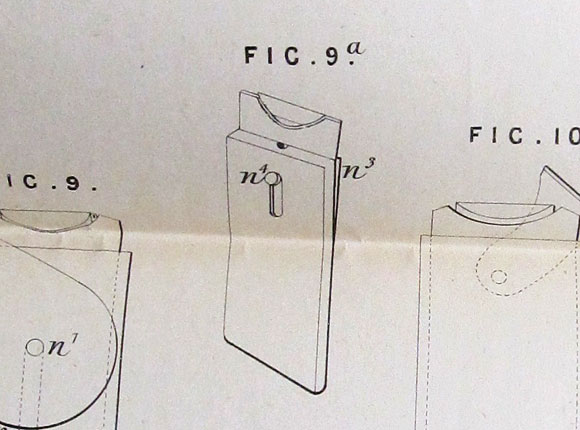
Patent #1473
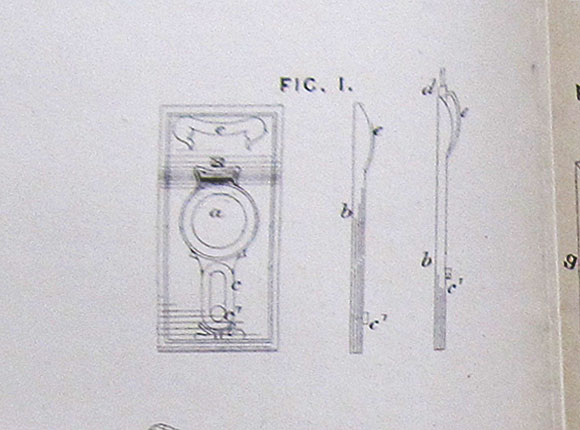
Patent #1322
Design Details
Needle Case Type: |
Flat-Names |
Patent/Registered to: |
William Avery - Redditch Manufacturer |
Patent/Design Representation #: |
Mechanical Patent #: 1473 (Fig. 9a) and 1322 (Fig. 1) |
Patent/Design Registration Date: |
May 21, 1870 and May 16, 1871 |
Location of Patent/Design Registration: |
British Library - Business and Intellectual Property Centre - London
|
Reference #: |
1870-1473 and 1871-1322 |
Dimensions: |
2.3 x 5.7 |
Material: |
Brass |
Name Variations: |
a) W. Avery & Son - Redditch
b) Baggallays, Westall & Spence - London (the sole source of this information is Horowitz and Mann as no example of this needle case
with this company name has been seen by the authors of this website) |
Other Variations: |
None |
Additional Photographs
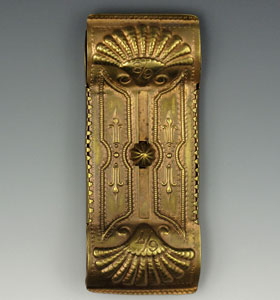
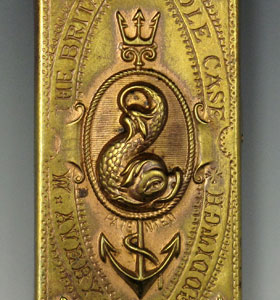
Back wih slider mechanism and front detail
Facts

Britannia is the personified symbol of British unity, liberty and strength emanating from a classical practice of allegorically representing
ideas and abstract concepts as beings. Since the 2nd century Britannia has been depicted as a goddess with a spear and shield though, through
time, her image has altered and her prominence as a rallying emblem of patriotism waxed and waned to suit contemporary circumstances. An
image of Britannia was used on British coins from 1672 appearing on the farthing issued in the reign of Charles II and used on coinage of every
monarch since 1797.
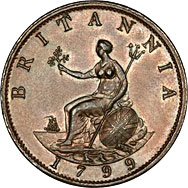
History
Britannia was the early Roman name for the group of islands off the coast of North Western Europe adapted from the earlier Greek name
Pretannia. By the 1st century BC it was used to refer to the isle of Great Britain which had earlier been known as Albion. The Roman
province of Britannia was established after the Roman conquest which began in 43 AD. Britannia as a goddess with an appearance similar to
Minerva came into being. On coins issued at the time of Hadrian she was depicted as beautiful young female, wearing a centurion’s helmet and
a white garment exposing her right breast. She was frequently seated, holding a spear and with a shield beside her. Her prominence as
a symbol of power and unity increased when female monarchs reigned and also in times of war. In the Victorian era she became a symbol of the
might of the British Empire and she was now depicted with a trident, changed in 1797 from a spear to reflect Britain’s naval triumphs, a union flag
covered shield and with the British lion at her side.
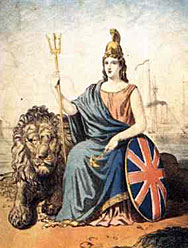
Miscellaneous
The unofficial national anthem “Rule, Britannia!” was based on a poem by Scottish poet and playwright James Thompson. Set to music by
Thomas August Arne around 1740, it was originally part of an entertainment based on Alfred the Great, performed at the country home of Fredrick,
Prince of Wales, who was the father of George III and Queen Victoria’s great-grandfather, to commemorate the ascension of George II. The tune
became very popular in London in 1745. At the time there was the threat of Jacobite rebellion, a campaign to overthrow the Hanoverian king for
the Stuart heir, Charles Edward Stuart known as Bonnie Prince Charlie. So popular was the tune that Jacobite versions with wording altered to
suit their cause, were written. In Victorian times, the original meaning, an exhortation to naval supremacy, altered through a change from
“rule the waves” to the currently accepted “rules the waves” as naval supremacy was claimed at the time. Click on the picture below to hear this
song. Be sure to turn on your speakers.
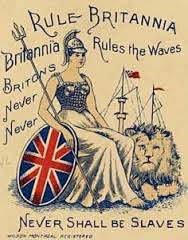
Note: Right side panel text and photos provided by Lynda Herrod.













